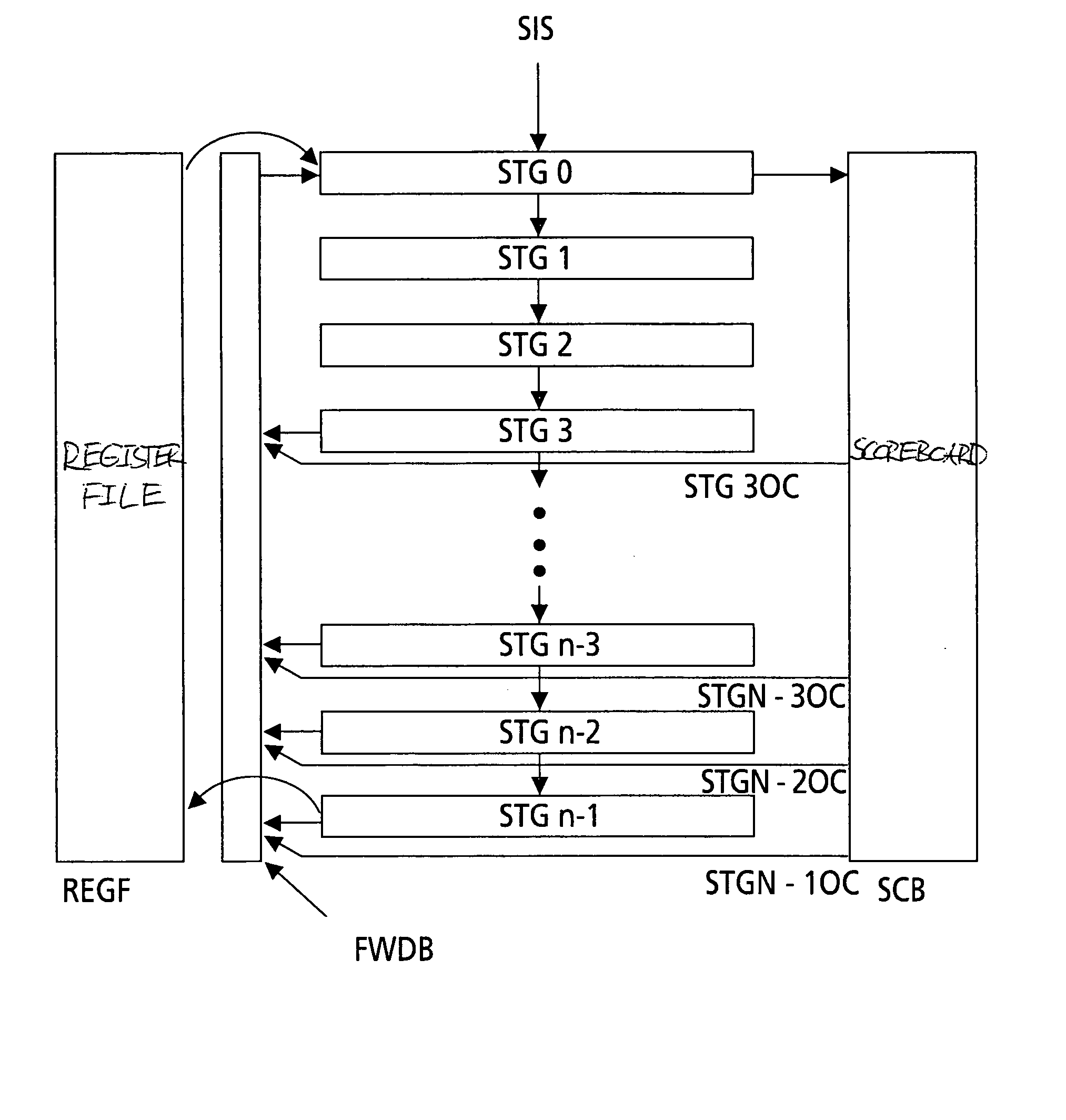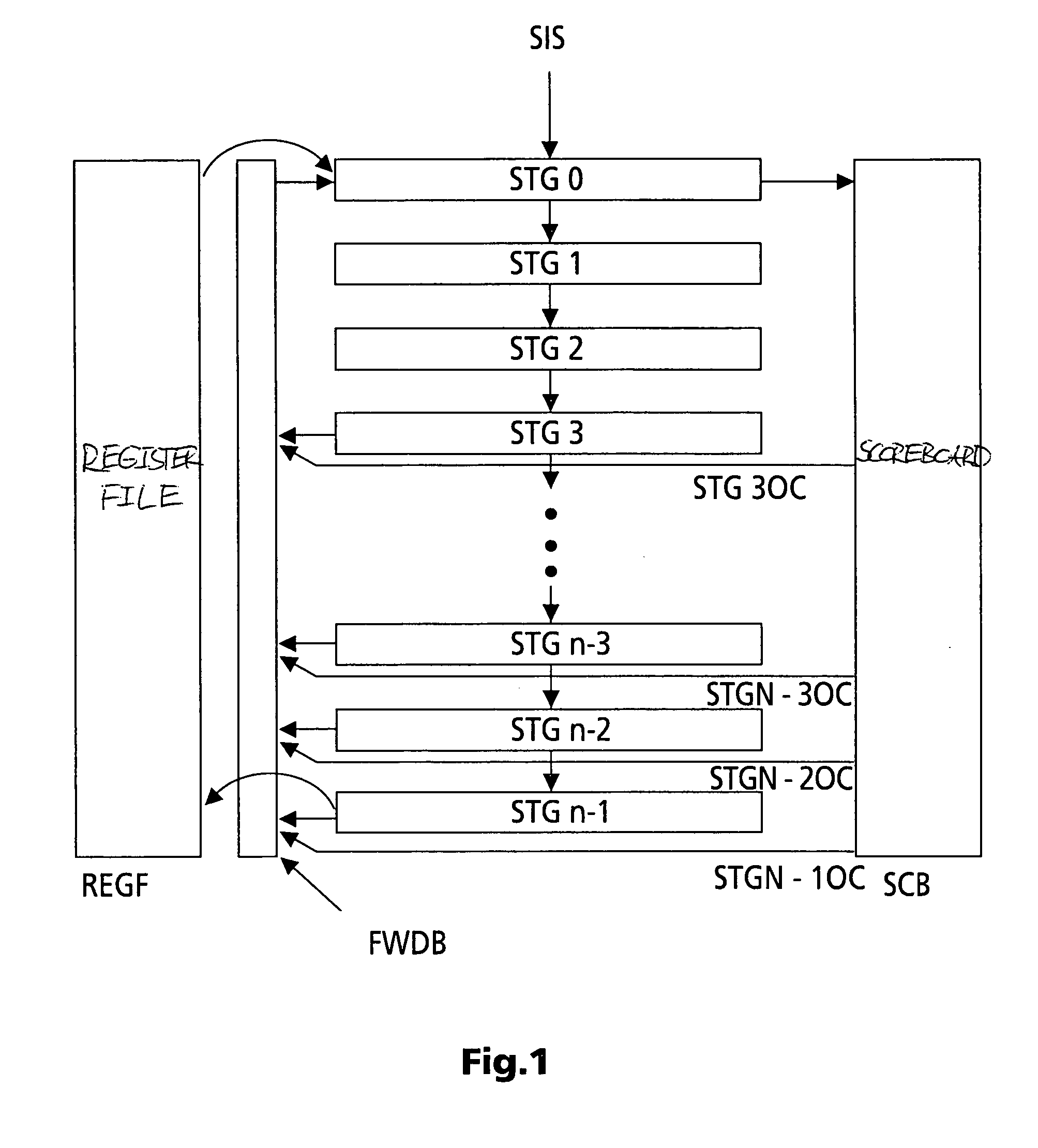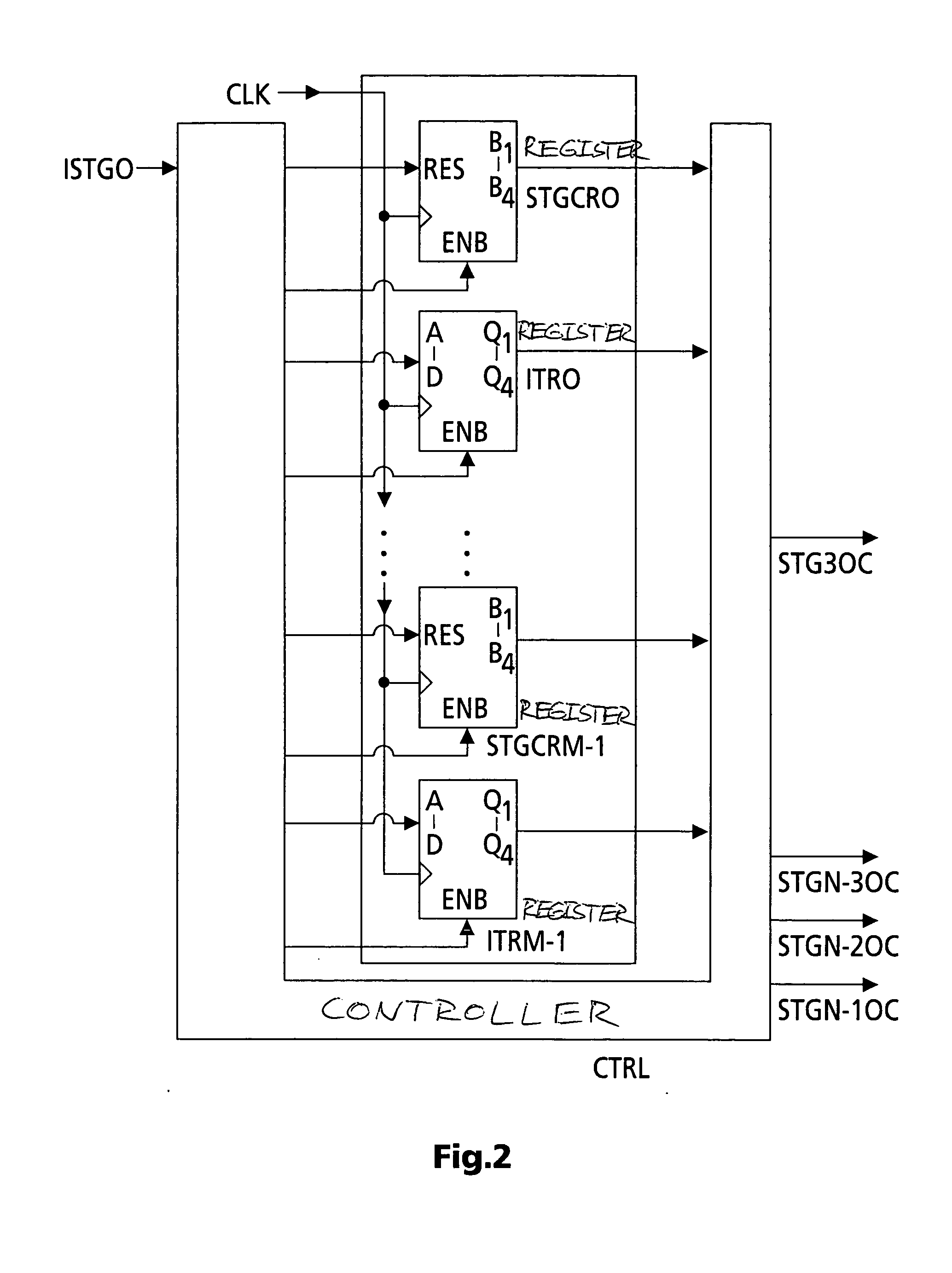Method and apparatus for pipeline processing a chain of processing instructions
a processing instruction and pipeline technology, applied in the field of pipeline processing chain processing apparatus, can solve the problems of slow processing speed, high cost of logic and wiring, and low-speed implementation of forwarding and instruction scheduling logic, and achieve the effect of increasing the efficiency of read after write pipeline hazard detection
- Summary
- Abstract
- Description
- Claims
- Application Information
AI Technical Summary
Benefits of technology
Problems solved by technology
Method used
Image
Examples
Embodiment Construction
[0027] In FIG. 1, a (sequential) instruction stream enters the first stage STG0 of a chain of n pipeline processing stages STG0 to STGN-1. These stages each include e.g. a chain of registers and suitable processing means that perform the typical calculations and operations carried out in a CPU or microprocessor. E.g. stages STG3 to STGn-2 can forward intermediate or partial results to a forwarding bus FWDB, or to multiple forwarding buses. But, depending on the application, stages STG2 and / or STG1, may, or additional ones of the following stages STG4, STG5, . . . , may not forward intermediate or partial results to bus FWDB. Stages STG0 to STGn-2 can forward intermediate pipeline processing results to the corresponding subsequent stage for further processing. The first stage STG0 can read intermediate or partial results from bus FWDB and / or from a register file REGF. The last stage STGn-1 writes the final results into register file REGF and eventually on bus FWDB. Stage STG0 writes ...
PUM
 Login to View More
Login to View More Abstract
Description
Claims
Application Information
 Login to View More
Login to View More - R&D
- Intellectual Property
- Life Sciences
- Materials
- Tech Scout
- Unparalleled Data Quality
- Higher Quality Content
- 60% Fewer Hallucinations
Browse by: Latest US Patents, China's latest patents, Technical Efficacy Thesaurus, Application Domain, Technology Topic, Popular Technical Reports.
© 2025 PatSnap. All rights reserved.Legal|Privacy policy|Modern Slavery Act Transparency Statement|Sitemap|About US| Contact US: help@patsnap.com



